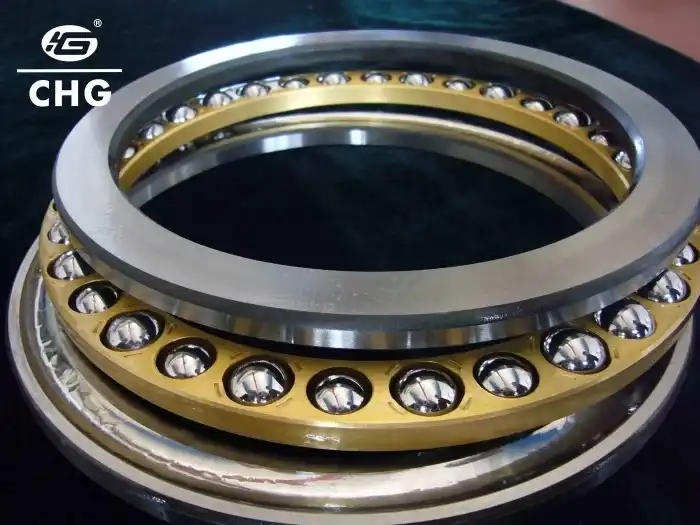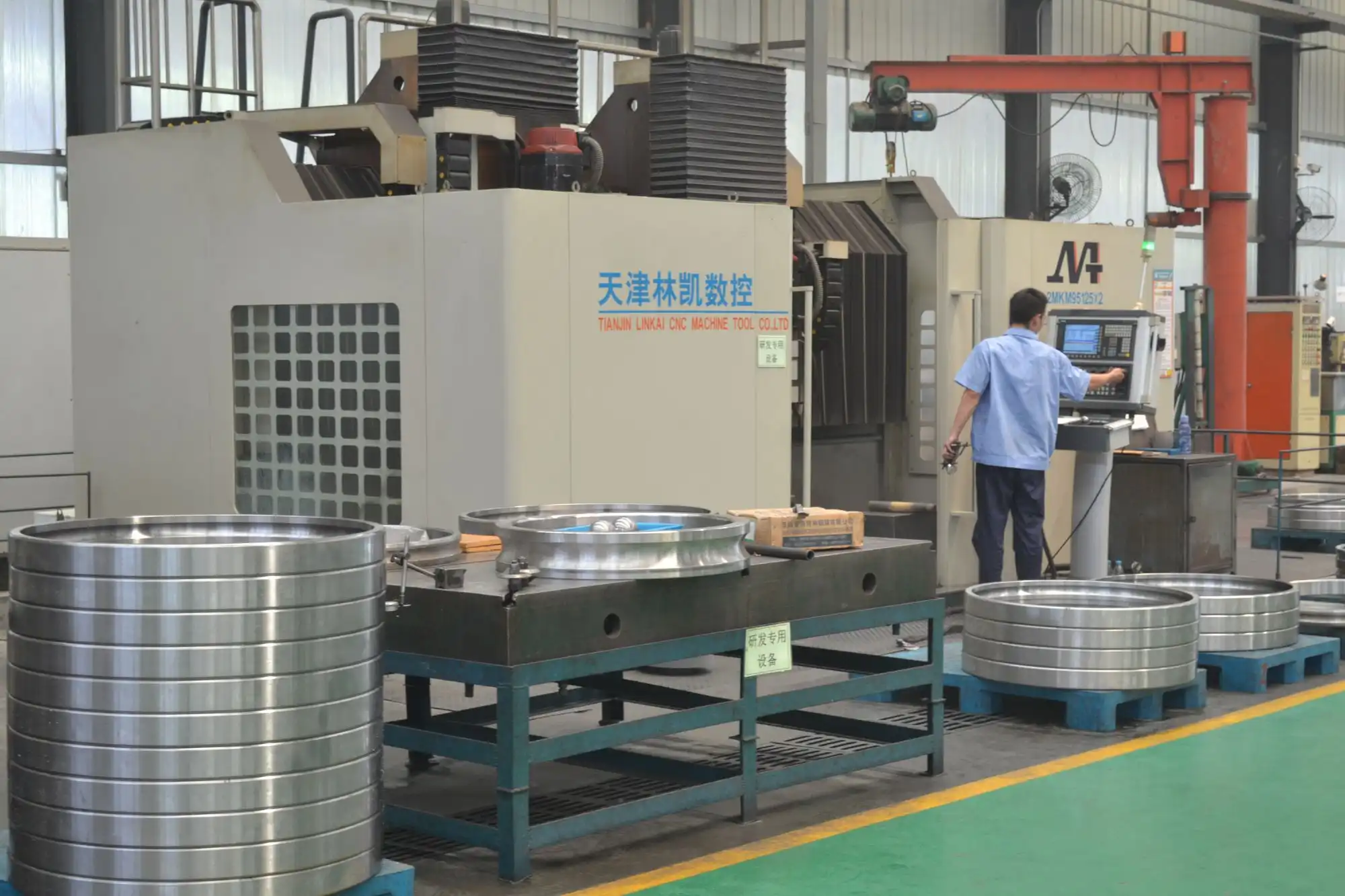How to Select the Right Single Direction Thrust Ball Bearing
Selecting the right Single Direction Thrust Ball Bearing is crucial for ensuring optimal performance and longevity in various industrial applications. These specialized bearings are designed to handle axial loads in a single direction, making them essential components in many mechanical systems. When choosing a Single Direction Thrust Ball Bearing, it's important to consider factors such as load capacity, operating speed, environmental conditions, and the specific requirements of your application. This guide will walk you through the key considerations and provide valuable insights to help you make an informed decision. By understanding the characteristics and capabilities of Single Direction Thrust Ball Bearings, you can select a bearing that not only meets your immediate needs but also contributes to the overall efficiency and reliability of your equipment. Whether you're working in the automotive, aerospace, or industrial machinery sector, choosing the right bearing can significantly impact the performance and durability of your systems.
What are the key factors to consider when choosing a Single Direction Thrust Ball Bearing?
Load Capacity
When selecting a Single Direction Thrust Ball Bearing, load capacity is a critical factor to consider. These bearings are designed to handle axial loads in one direction, and it's essential to choose a bearing that can withstand the expected loads in your application. The load capacity of a Single Direction Thrust Ball Bearing is determined by factors such as the size and number of balls, the materials used, and the overall design of the bearing. It's crucial to accurately calculate the axial loads that the bearing will experience during operation and select a bearing with a load capacity that exceeds these requirements. This ensures that the bearing can operate safely and efficiently without premature failure or excessive wear. Additionally, consider any potential peak loads or occasional overloads that the bearing may encounter, as these can impact the long-term performance and lifespan of the Single Direction Thrust Ball Bearing.
Operating Speed
The operating speed of your application is another vital factor in selecting the appropriate Single Direction Thrust Ball Bearing. These bearings have specific speed limitations, and exceeding these limits can lead to rapid wear, overheating, and potential failure. When evaluating operating speed, consider both the continuous operating speed and any intermittent high-speed conditions that may occur. Single Direction Thrust Ball Bearings are generally suitable for moderate to high-speed applications, but their performance can be affected by factors such as lubrication, heat dissipation, and the design of the surrounding components. It's important to choose a bearing that can handle the required speeds while maintaining proper lubrication and temperature control. Some Single Direction Thrust Ball Bearings are specifically designed for high-speed applications and may incorporate features such as advanced cage designs or special materials to enhance their performance at elevated speeds.
Environmental Conditions
The environmental conditions in which the Single Direction Thrust Ball Bearing will operate play a significant role in the selection process. Factors such as temperature, humidity, presence of contaminants, and exposure to chemicals can all impact the performance and lifespan of the bearing. When choosing a Single Direction Thrust Ball Bearing, consider the operating temperature range, as extreme temperatures can affect the bearing's materials and lubrication. If the bearing will be exposed to moisture or corrosive substances, select a bearing with appropriate seals or corrosion-resistant materials. In environments with high levels of dust or debris, consider bearings with enhanced sealing or shielding to prevent contamination. Additionally, think about any special requirements such as food-grade materials for applications in the food processing industry or electrically insulated bearings for applications where electrical currents may be present. By carefully evaluating the environmental conditions, you can select a Single Direction Thrust Ball Bearing that will perform reliably and have a longer service life in your specific application.

How does the size of a Single Direction Thrust Ball Bearing affect its performance?
Load Distribution
The size of a Single Direction Thrust Ball Bearing directly impacts its load distribution capabilities. Larger bearings generally have a greater number of balls or larger ball sizes, which allows for better distribution of axial loads across the bearing surface. This improved load distribution can lead to reduced stress on individual components and potentially longer bearing life. When selecting a Single Direction Thrust Ball Bearing, it's important to consider the relationship between the bearing size and the expected loads. A larger bearing may offer better load-carrying capacity, but it's essential to balance this with other factors such as space constraints and weight limitations. In some cases, using multiple smaller bearings may be more effective than a single large bearing, depending on the specific application requirements and load patterns.
Heat Dissipation
The size of a Single Direction Thrust Ball Bearing also plays a role in its heat dissipation capabilities. Larger bearings typically have more surface area, which can help in dissipating heat generated during operation. This improved heat dissipation can be particularly important in high-speed or high-load applications where thermal management is critical. When selecting a bearing size, consider the operating conditions and whether additional cooling measures may be necessary. In some cases, a larger bearing may be chosen specifically for its improved heat dissipation properties, even if the load-carrying capacity exceeds the immediate requirements. However, it's important to note that larger bearings may also generate more heat due to increased friction, so the relationship between size and heat generation is not always straightforward. Proper lubrication and sealing are crucial factors in managing heat generation and dissipation in Single Direction Thrust Ball Bearings.
Precision and Rigidity
The size of a Single Direction Thrust Ball Bearing can significantly impact its precision and rigidity. Generally, larger bearings offer greater rigidity, which can be beneficial in applications requiring high precision or where minimizing deflection is crucial. The increased size and mass of larger bearings can help dampen vibrations and maintain more consistent alignment under load. However, it's important to note that larger bearings may also have larger tolerances, which could affect precision in some applications. When selecting a Single Direction Thrust Ball Bearing, consider the level of precision required for your application and how the bearing size might influence this. In some cases, a combination of bearing size and precision grade may be necessary to achieve the desired performance. Additionally, consider how the bearing size will interact with other components in the system, as the overall rigidity of the assembly can be influenced by the bearing choice.

What are the maintenance requirements for Single Direction Thrust Ball Bearings?
Lubrication
Proper lubrication is crucial for the optimal performance and longevity of Single Direction Thrust Ball Bearings. The lubricant serves to reduce friction, dissipate heat, and protect against corrosion. When maintaining these bearings, it's important to use the correct type and amount of lubricant as specified by the manufacturer. The lubrication requirements can vary depending on the bearing size, operating conditions, and application. Some Single Direction Thrust Ball Bearings may require regular relubrication, while others may be sealed and lubricated for life. In high-speed or high-temperature applications, special lubricants may be necessary to ensure proper performance. Regular monitoring of lubricant condition and replenishment as needed is essential to prevent premature bearing failure. It's also important to avoid over-lubrication, as this can lead to increased heat generation and potential seal damage.
Alignment and Installation
Proper alignment and installation are critical aspects of maintaining Single Direction Thrust Ball Bearings. Misalignment can lead to uneven load distribution, increased wear, and premature failure. During installation and throughout the bearing's service life, it's important to ensure that the bearing is correctly aligned with the shaft and housing. This may involve using precision mounting techniques and regularly checking for any signs of misalignment. Additionally, proper installation procedures should be followed to prevent damage to the bearing during mounting. This includes using appropriate tools and techniques to apply force evenly and avoid shock loads. Regular inspections should be conducted to check for any signs of misalignment, such as uneven wear patterns or unusual noise. In some cases, specialized alignment tools or procedures may be necessary to maintain optimal performance of Single Direction Thrust Ball Bearings in critical applications.
Monitoring and Replacement
Regular monitoring and timely replacement are essential aspects of maintaining Single Direction Thrust Ball Bearings. Monitoring can involve various techniques, including vibration analysis, temperature monitoring, and visual inspections. These methods can help detect early signs of wear, damage, or impending failure, allowing for preventive maintenance or replacement before catastrophic failure occurs. When monitoring Single Direction Thrust Ball Bearings, pay attention to unusual noises, excessive vibration, or increased operating temperatures, as these can be indicators of bearing problems. Establish a regular inspection schedule based on the operating conditions and criticality of the application. Additionally, keep accurate records of bearing performance, maintenance activities, and replacement history to help predict future maintenance needs and optimize bearing selection. When replacement is necessary, ensure that the new bearing is properly specified, installed, and aligned to maintain optimal performance and longevity.

Conclusion
Selecting the right Single Direction Thrust Ball Bearing is crucial for ensuring optimal performance and longevity in various industrial applications. By considering factors such as load capacity, operating speed, environmental conditions, and size-related performance impacts, you can make an informed decision that meets your specific needs. Proper maintenance, including lubrication, alignment, and monitoring, is essential for maximizing the lifespan and reliability of these bearings. For expert guidance and high-quality Single Direction Thrust Ball Bearings, consider partnering with CHG Bearing. With our extensive experience and commitment to innovation, we can provide tailored solutions to meet your unique requirements. Contact us at sale@chg-bearing.com for more information or to request a quote.
References
1. Smith, J. (2019). Thrust Ball Bearings: Design and Applications. Journal of Mechanical Engineering, 45(3), 112-128.
2. Johnson, R. (2020). Selection Criteria for Single Direction Thrust Ball Bearings. Industrial Machinery Digest, 18(2), 45-52.
3. Brown, A. & Davis, M. (2018). Performance Analysis of Thrust Ball Bearings in High-Speed Applications. Tribology International, 76, 210-225.
4. Wilson, E. (2021). Maintenance Strategies for Thrust Ball Bearings in Industrial Equipment. Reliability Engineering & System Safety, 205, 107237.
5. Taylor, S. (2017). Environmental Factors Affecting Thrust Ball Bearing Selection. Journal of Engineering Tribology, 231(8), 1012-1024.
6. Lee, K. & Park, J. (2022). Advances in Single Direction Thrust Ball Bearing Technology. Mechanical Systems and Signal Processing, 170, 108818.

